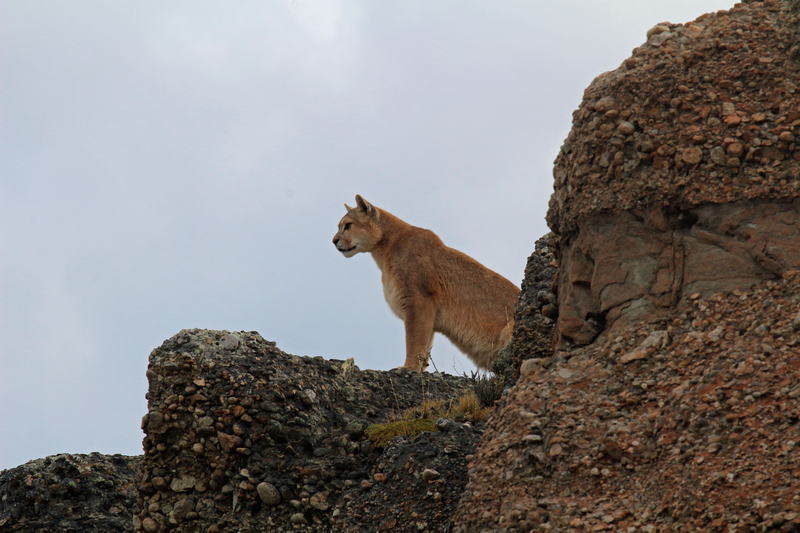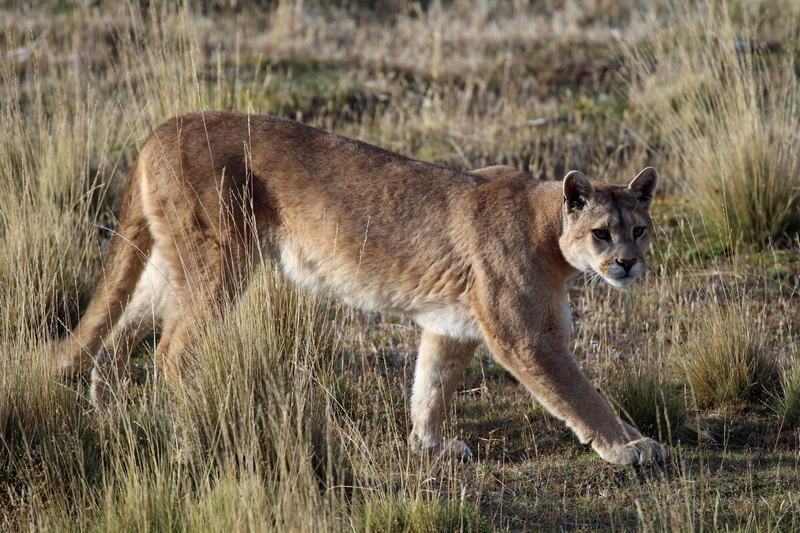
The puma (Puma concolor) or ‘guardian of the Andes’ as known by locals, is found the length and breadth of Chile, from the Atacama to Patagonia. This charismatic cat it is revered by indigenous cultures throughout the Americas. To them, the puma is a sacred animal – together with the condor and the Eagle. (In North America pumas are known as cougars or mountain lions).

Pumas have adapted to a variety of habitats. One of the best places to see them is Torres del Paine National Park in Chilean Patagonia. Once hunted by sheep farmers, now they are in their natural habitat, roaming free. They are well camouflaged. Our experienced guides know when and where you are most likely to see pumas. Unlike other places, here they wander about in daytime ignoring people. They are top predators and an integral part of the ecosystem. Here guanacos are their favourite food.

Here are 9 interesting facts about Pumas:
- The puma is the fourth largest cat in the world, after the lion, tiger and jaguar. Male pumas can weigh anywhere from 68 up to 100 kilos, while females tend to weigh over 45 kilos. They can measure between 1.5 to 2.7 metres long, from head to tail.
- The puma has a huge range, from Canada all the way down to Patagonia. They prefer mountainous zones, such as in the Torres del Paine National Park. They like rocks and boulders to hide behind while hunting.
- Pumas are often solitary animals. Males prefer to go their own way after breeding, yet recent research shows that they do share skills and family responsibility.
- The puma does not roar like other felines, such as the lion or the tiger, but purrs like a domestic cat.
- The puma’s fur has a reddish-grey tone with lighter areas on the lower body and a black tip on the tail. The puma’s colour allows it to blend in with the rocks and shrubs of the Patagonian pampas when stalking its prey.
- The puma has a slim body, like a domestic cat, but on a much larger scale. Colloquially, the Patagonians refer to pumas as gatos (cats in Spanish).
- Their lifespan is only ten years.
- The cubs are born blind and completely helpless for two weeks until they open their eyes.
- Pumas can begin to reproduce from 2 to 3 years old, and have 2 or 3 cubs at a time. The population within the Torres del Paine National Park is about 50 to 100 pumas.

Photography: Andy Brentnall
Interested in wildlife watching and tours in Torres del Paine National Park? We can arrange bespoke holidays and puma tracking expeditions for keen photographers. Please contact us.
Watch this amazing film (12 minutes) behind the scenes of a wildlife documentary.
Related: Pumas on the prowl
Wildlife Spotlight on the Andean Condor
8 Amazing Journeys You Should Take in Chile
Like what you read in this blog? Talk to our travel expert to plan your dream trip to South America
Send message